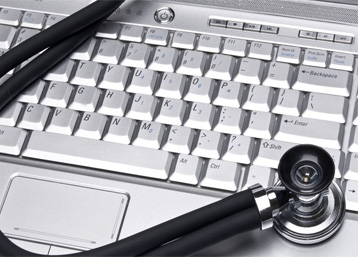 In the traditional medical transcription scenario, the physician dictated clinical notes into a recorder and sent the tape via courier or email to a medical transcription company for documentation. After the files were transcribed, they were sent back to the doctor’s office for review, printing, and filing. This time consuming process delayed care and often caused HIPAA compliance problems.
In the traditional medical transcription scenario, the physician dictated clinical notes into a recorder and sent the tape via courier or email to a medical transcription company for documentation. After the files were transcribed, they were sent back to the doctor’s office for review, printing, and filing. This time consuming process delayed care and often caused HIPAA compliance problems.
The introduction and widespread adoption of electronic health records (EHRs) changed all of this. In May 2016, Modern Healthcare reported that data from the Office for the National Coordinator for Health Information Technology showed that up to 96% of hospitals have a federally approved EHR that meets Meaningful Use requirements. The Office also reported that 83% of office-based physicians had adopted an electronic health records (EHR) by January 2015.
With these real-time records, authorized users can access patient information instantly and securely. In addition to standard information such as medical and treatment histories of patients, EHR software is designed to:
- Include diagnoses, medications, treatment plans, immunization dates, allergies, radiology images, and laboratory and test results.
- Ensure provider access to evidence-based tools that facilitate decision-making about the patient’s care.
- Automate and simplify provider workflow.
One of the key features of an EHR is that they enable all clinicians involved in a patient’s care to document and share information.
Despite their efficiency and increased adoption, EHRs are not without challenges. Physicians report difficulties with data entry, including delays and errors in creating notes. Lack of accountability for making updates results in poor documentation. Moreover, the system detracts from the quality of the patient-provider encounter as the physician is too busy entering data into the system.
However, EHRs are the future of medicine, and today, efficient integrated medical transcription services are available to meet the needs of both physicians and patients. Outsourcing medical transcription to an established HIPAA-compliant company ensures safe, smart integrated dictation and documentation services. These service providers have full electronic record transcription capabilities and can:
- Integrate dictation capture and transcription, and import documents directly into the EMR – EHR system.
- Transcribe dictation sent from mobile devices and enter the information in the system.
- Ensure rich patient summaries.
- Provide reports showing the progress on each file, so that providers can modify and edit the files at their convenience.
- Perform quality audits.
Such services are especially useful for oncologists and other specialists who have much higher documentation needs. A professional oncology medical transcription service provider can meet these requirements in customized turnaround time.
In the current scenario of shifting payment models, new government mandates, ICD-10 coding changes and other developments, reliable medical transcription companies are doing a great job in helping physicians harness technology, leverage the power of the EHR, enhance patient care, and manage their revenue cycle.


